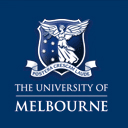Full description
The psychiatric disorders schizophrenia and obsessive-compulsive disorder (OCD) are extremely debilitating and associated with enormous personal, social, and economic costs. For these reasons, it is critical to understand the cause and neurobiological mechanisms involved in order to develop effective intervention strategies to prevent these illnesses or ameliorate their effects. There is now compelling evidence to implicate the anterior cingulate cortex (ACC) in the pathophysiology of both schizophrenia and OCD, but it is still unclear: (i) which sub-regions of the ACC are involved; (ii) what the nature and extent of the abnormalities are (iii) whether the abnormalities are lateralised, and; (iv) whether ACC changes explain the differing presentations of schizophrenia and OCD. Progress in understanding the specific nature of ACC involvement in these disorders is also hampered by continued referral to the ACC as a functionally homogenous region of the brain. This project sought to collect concurrent micro, macro, and dynamic information from the functional subregions of the ACC (derived from multiple imaging modalities) to provide important new insights into the neurobiological basis of these disorders. Patients with schizophrenia (n=16) were recruited from the rehabilitation services from the NorthWest Mental Health Program. Patients with OCD (n=22) were recruited through the University of Melbourne Psychology Clinic located at Royal Melbourne Hospital. Only patients with established disorders (illness duration of at least 2 years) were chosen, as they tend to be more homogenous than patients in the acute stages of illness. These two patient groups were matched for age – which provides a rough match for duration of illness, given the similar age of onset in both disorders. Healthy control volunteers (n=33; matched to the schizophrenia and OCD subjects on age, years of education, premorbid IQ, and paternal socio-economic status) were recruited through a database of healthy volunteers already established during previous MRI research projects. Time period: 2003-2005 Subjects
User Contributed Tags
Login to tag this record with meaningful keywords to make it easier to discover


